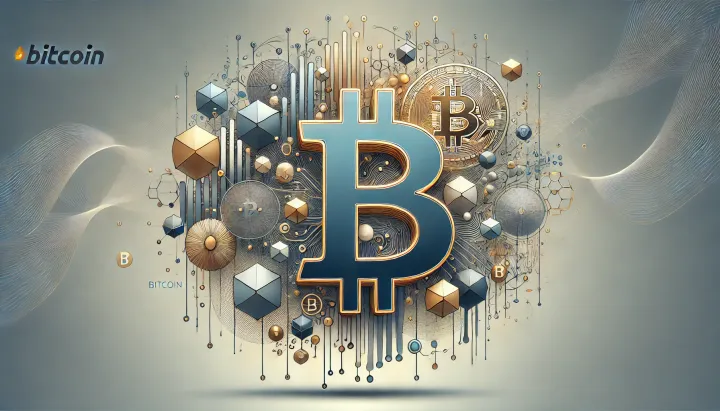Bitcoin’s Transition: Scarcity, Security & Systemic Shifts
March 23, 2025’s episode of Robin Seyr Podcast with Fractal Encrypt examines Bitcoin’s impending supply scarcity post-2032, focusing on network security, self-custody, and evolving economic models.

- My 'briefing notes' summarize the content of podcast episodes; they do not reflect my own views.
- They contain (1) a summary of podcast content, (2) potential information gaps, and (3) some speculative views on wider Bitcoin implications.
- Pay attention to broadcast dates (I often summarize older episodes)
- Some episodes I summarize may be sponsored: don't trust, verify, if the information you are looking for is to be used for decision-making.
Summary
March 23, 2025’s episode of Robin Seyr Podcast with Fractal Encrypt examines Bitcoin’s impending supply scarcity post-2032, focusing on network security, self-custody, and evolving economic models. The discussion reveals significant operational and economic challenges alongside technological integrations. These insights are crucial for guiding policy, investment, and community strategy.
Take-Home Messages
- Bitcoin Supply Scarcity: The 2032 halving will drastically reduce block rewards, necessitating a re-evaluation of miner incentives and network security.
- Security Imperatives: Enhanced self-custody practices and operational security measures are essential to mitigate risks from increased public exposure.
- Economic Transition: Bitcoin-only commerce faces friction as customer spending hesitancy challenges revenue models, prompting innovative business solutions.
- Technological Convergence: The integration of AI and art within the Bitcoin ecosystem opens new avenues for creative innovation and operational efficiency.
- Systemic Impact: Widespread Bitcoin adoption could reshape public economic policies and societal structures, underscoring the need for adaptive regulatory frameworks.
Overview
The episode opens with a detailed exploration of Bitcoin’s halving cycles, with a particular focus on the 2032 event when block rewards will drop below one Bitcoin. Fractal Encrypt explains that this reduction signals a future marked by supply scarcity and altered economic incentives for miners. The discussion establishes the framework for understanding Bitcoin’s long-term technical and economic evolution.
Fractal Encrypt emphasizes the critical importance of personal security, noting that public exposure significantly increases risks for high-profile Bitcoin users. Real-world examples of security breaches are discussed to illustrate the need for robust self-custody practices. He weighs the trade-offs between achieving public recognition and maintaining operational privacy.
A significant portion of the conversation centers on the challenges faced by Bitcoin-only businesses. Fractal Encrypt discusses how customer reluctance to spend Bitcoin creates economic friction, impacting revenue streams and operational viability. He explores potential strategies to incentivize spending and foster a more resilient Bitcoin economy.
Emerging technologies such as AI and artistic expression are highlighted as emerging forces within the Bitcoin ecosystem. Fractal Encrypt shares insights on how these tools enhance creative processes and operational efficiency. The dialogue concludes by acknowledging that Bitcoin’s broader societal and economic implications extend well beyond its technical foundations.
Stakeholder Perspectives
- Bitcoin Miners: Concerned with diminishing rewards and the long-term viability of mining incentives post-2032.
- Bitcoin Users: Focused on improving personal security and adopting robust self-custody practices.
- Bitcoin Merchants: Face challenges in driving customer adoption in a Bitcoin-only economy, necessitating innovative transaction models.
- Policymakers: Seek to balance regulation with innovation while protecting consumers in an evolving financial landscape.
- Artists and Technologists: Embrace the convergence of AI and art as a means to drive creative and operational advancements within the ecosystem.
Implications and Future Outlook
The 2032 halving is poised to reshape Bitcoin’s economic framework, compelling Bitcoin miners to innovate in response to reduced block rewards. Enhanced security measures and self-custody practices will become increasingly vital as public exposure heightens operational risks. Stakeholders must adapt swiftly to ensure network resilience in this evolving landscape.
Economic friction in Bitcoin-only commerce is likely to persist as customer hesitancy to spend Bitcoin challenges traditional revenue models. Innovative business strategies and incentive structures could mitigate these challenges, enabling a more seamless transition to a Bitcoin-centric economy. Collaborative efforts between industry players and policymakers will be essential to foster this economic transition.
The integration of AI and art into the Bitcoin ecosystem presents significant opportunities for operational and creative innovation. These technological advancements can streamline processes, improve security, and expand Bitcoin’s utility beyond conventional financial applications. Embracing these changes will require adaptive regulatory measures and proactive educational initiatives.
Information Gaps
- How will the diminishing Bitcoin block rewards post-2032 impact overall network security and miner incentives? This question addresses Bitcoin’s foundational economic structure and its long-term sustainability.
- What measures can Bitcoin users adopt to mitigate the risks associated with public exposure? This inquiry targets recurring security challenges and the necessity of robust self-custody practices.
- What role does misinformation play in hindering Bitcoin adoption, and how can it be countered? This question focuses on reducing informational barriers and improving educational outreach.
- How does Bitcoin’s deflationary model reshape traditional personal finance and net worth measurement? This inquiry explores the broader economic implications of shifting financial paradigms.
- How might widespread Bitcoin adoption alter public economic policies and societal structures? This question examines the macroeconomic and regulatory impacts of integrating Bitcoin into mainstream systems.
Broader Implications for Bitcoin
Bitcoin as a Strategic Asset
Bitcoin’s impending scarcity post-2032 could elevate its status as a strategic asset, prompting investors to reassess long-term portfolio strategies. The limited future supply may drive up demand, influencing global reserve asset considerations. This scarcity is likely to stimulate broader discussions on sustainable monetary systems and decentralized finance.
Enhanced Operational Security
As public exposure increases, the need for sophisticated self-custody and privacy-enhancing technologies becomes more pressing. This trend may lead to the development of new security protocols that set industry standards across decentralized networks. Improved operational security measures will be critical to maintain user confidence and network integrity.
Technological Integration and Economic Resilience
The fusion of AI, art, and Bitcoin signals a new phase for the ecosystem, potentially driving new business models and creative applications. This integration can enhance operational efficiency and broaden Bitcoin’s practical applications beyond finance. As these technologies converge, they may also inform regulatory adaptations and inspire innovative economic policies.



Comments ()